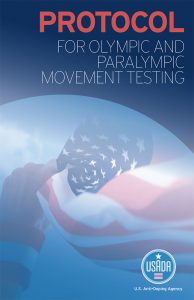Adjudication Process
The results management and adjudication process is designed to balance the interest of clean athletes in not competing against another athlete or athletes facing an unresolved doping charge, with the opportunity for athletes and other persons who have been charged with an anti-doping rule violation to have an opportunity for a hearing prior to being declared ineligible to participate in sport. USADA’s adjudication process is compliant with the Ted Stevens Olympic & Amateur Sports Act, the World Anti-Doping Code, and the United States Olympic & Paralympic Committee (USOPC) National Anti-Doping Policy, which was approved by the USOPC Athletes’ Advisory Council. Below is a summary of the adjudication process for an anti-doping rule violation. For more detailed information, please read the USADA Protocol for Olympic and Paralympic Movement Testing.
Independent WADA Laboratories
After an athlete provides a blood and/or urine sample to a doping control or blood collection officer, the athlete’s sample is sent to a WADA-accredited laboratory. A WADA laboratory is compliant with the WADA International Standard for Laboratories, meeting the strictest standards globally. A WADA laboratory receives samples with no identifying connection to the athletes, removing any opportunity for bias in reporting results. The independent WADA laboratory results are communicated to USADA, which reports results to athletes, as well as uploads the results to WADA’s Anti-Doping Management System (ADAMS).
Identification of an Anti-Doping Rule Violation
Although an anti-doping rule violation (ADRV) most often occurs as the result of a WADA laboratory reporting to USADA an adverse analytical finding (AAF), i.e., a positive test, an ADRV can occur from any of the following.
- The presence of a prohibited substance or its metabolites or markers in an athlete’s sample.
- Use or attempted use by an athlete of a prohibited substance or a prohibited method.
- Evading sample collection, or refusing, or failing to submit to sample collection without compelling justification after notification by a duly authorized person.
- Violation of applicable requirements regarding athlete availability for out-of-competition testing. Any combination of three missed tests and/or filing failures within a twelve-month period as determined by anti-doping organizations with jurisdiction over the athlete shall constitute an anti-doping rule violation.
- Tampering or attempted tampering with any part of doping control.
- Possession of a prohibited substance or a prohibited method.
- Trafficking or attempted trafficking of any prohibited substance or prohibited method.
- Administration or attempted administration to any athlete in-competition of any prohibited method or prohibited substance.
- Administration or attempted administration to any athlete out-of-competition of any prohibited method or any prohibited substance that is prohibited out-of-competition.
- Assisting, encouraging, aiding, abetting, conspiring, covering up or any other type of intentional complicity or attempted complicity involving an anti-doping rule violation, attempted anti-doping rule violation or violation of a provisional suspension or period of ineligibility by another person.
- Associating with coaches, trainers, physicians, or other athlete support personnel who are sanctioned and/or criminally convicted of doping. Some examples of assistance include obtaining training, nutrition, or medical advice, and/or allowing the individual to serve as an agent or representative.
- Discouraging or retaliating against someone from good-faith reporting of information that relates to an alleged anti-doping rule violation or alleged non-compliance with the Code.
The athlete, the athlete’s sport national governing body, the athlete’s sport international federation, the USOPC, and WADA are all kept informed of the results management process for any alleged anti-doping rule violation.
ATHLETE'S DECISION
In the event that a WADA laboratory reports an AAF for an athlete’s A sample, the athlete may request the B sample to be tested to confirm the presence of the prohibited substance and/or prohibited method detected in the A sample. The athlete has the opportunity to be present when the B sample is opened and analyzed. Once the B sample analysis is waived or confirms the A sample results, USADA can charge an athlete with an anti-doping rule violation.
Once charged with an anti-doping rule violation, an athlete can choose to accept the proposed sanction or request a hearing before an independent arbitrator(s). If an athlete ignores USADA’s charging letter, a sanction is imposed after a set period of time.
Independent Arbitration Hearing
An athlete charged with an anti-doping rule violation is entitled to have their case heard by an independent arbitrator not affiliated with USADA. All evidence is subject to disclosure in accordance with the law and witnesses’ testimony is given under oath and subject to penalty of perjury and cross examination. The arbitrator provides a written decision to all parties. If an anti-doping rule violation is declared, the decision will be available on USADA’s website.
APPEAL
The athlete, USADA, WADA, or the relevant international sport federation (IF) can appeal the decision to the Court of Arbitration for Sport (CAS). A decision delivered by CAS is final.





